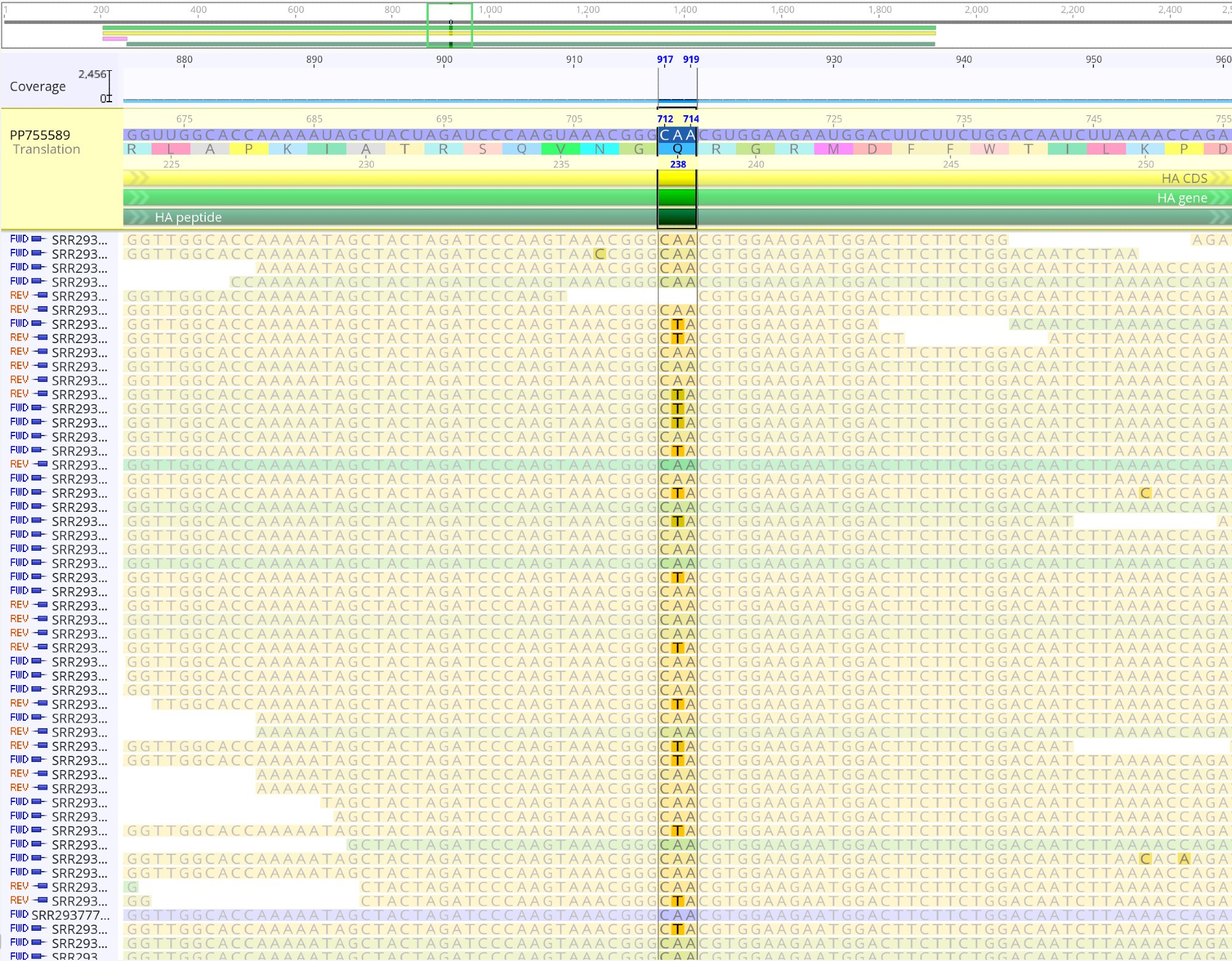This data is from "peridomestic animals on USDA confirmed premises affected by H5N1 clade 2.3.4.4b genotype B3.13".
That mouse was infected with B3.13 that had 65% Q226 (wt) and 35% L226 (variant), so an iSNV.
Here's a screenshot (note, H5 numbering - Q238L).
https://www.ncbi.nlm.nih.gov/biosample/SAMN41805957
That mouse was infected with B3.13 that had 65% Q226 (wt) and 35% L226 (variant), so an iSNV.
Here's a screenshot (note, H5 numbering - Q238L).
https://www.ncbi.nlm.nih.gov/biosample/SAMN41805957

Comments
Does the fact that we found Q226L in a mouse on a farm back in June of this year change the threat picture of H5N1?
No, it does not, but we're playing a numbers game.
I would rather not.